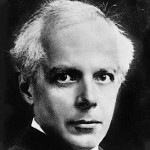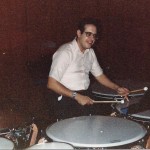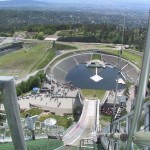My Musical Career|Part Twenty-Seven
Playing the Bartok Sonata for Two Pianos and Percussion (orchestral version) and Other Highlights…
One of the biggest challenges facing me that first season with the orchestra happened relatively early on. I was fully aware of it as I had been sent a copy of the season’s program during the run-up to our departure for Norway. The challenge was to participate in a performance of the orchestral version of Bela Bartok’s famous Sonata for Two Pianos and Percussion – called in this version, the Concerto for Two Pianos, Percussion and Orchestra. It was scheduled for November of 1983, and the conductor was to be Dmitri Kitaenko. The piano soloists were the Aran piano duet – Elif and Bedi Aran. The program was to open with the Beethoven Eighth Symphony and conclude with Rimsky-Korsakov’s “Cappricio Espagnol”.
For those of you who are not familiar with the piece, which I and most of the music world consider to
be one of Bartok’s masterpieces, the work is scored for two pianos and two percussionists in its original chamber music guise. Bartok later added an orchestral part so that the work could also be performed as a concerto. The piano and percussion parts are identical in both versions, and they stretch the abilities (both technical and musical) of the performers to their utmost.
The percussion parts are divided between two players: Player 1 is responsible for timpani, whereas Player 2 is responsible for xylophone and most of the snare drum, as well as bass drum, triangle and tamtam. Both players share percussion duties at some point during the work; I remember the second movement well as there was some nice delicate cymbal work (with triangle beater) during it.
I was assigned Percussion 1, and Percussion 2 was played by our excellent principal percussionist and my good friend and colleague Per Erik Thorsen.
The run up…
We started our own personal practice for the Bartok in mid-September 1983, shortly after my arrival in Oslo. We started with a working lunch or two to plot out who was going to play what in which movement. True, the composer was very careful to make the assignments, but it is quite normal for the performers to make small adjustments to suit the needs of that particular performance. Per Erik took the tam-tam part in the introduction, freeing me up to concentrate on the timpani part, as that slow intro and build-up to the extremely fast section is tricky in the extreme.
After the working lunches, we then proceeded to our own personal practicing. The Oslo Konserthus had a pair of oversize practice rooms, one of which was home to the Ludwig timpani. I used those, augmented by a pair of snare drums and suspended cymbals for my practice sessions. I remember doing at least five two-hour sessions on my own in order to get familiar with the work and its myriad pitfalls. They were pretty intensive sessions, as I had not played the piece before, and I had to pretty much start from scratch.
Even though I was familiar with the piece from a listening and following the score standpoint, I had to get inside the score from a practical player’s perspective. The learning curve on the Bartok is a steep one, and it is not for the faint of heart. One of the most difficult moments for the timpanist is at the very beginning of the fast section in the first movement, when he establishes the tempo for the balance of the movement. After the slow build-up of the introduction, and then switching to the extremely fast tempo was like riding a roller coaster -a slow climb to the top and a sudden acceleration.
Once we were well into our practice cycle, Per Erik and I scheduled a series of joint practice sessions in which we played through the work several times and made the necessary adjustments. I enjoyed these sessions very much, as I got to know his playing and to know him better, and as we became better acquainted with each other, we were better able to adapt to each other, and became more of a team.
These sessions lasted about three hours each, and I remember holding at least two of them.
A word about my colleague, Per Erik. He had been principal percussionist since 1964, and as such was enormously experienced. He was a phenomenal snare drummer, and a great all-around percussionist. He was known by many as the “Father of Percussion” in Norwegian percussion circles, having taught many of the foremost percussionists and percussion teachers who are still active today. Back in 1983, many of these were either in their last year of schooling, or just starting their careers.
Per Erik was a gentleman, and was very patient with me. I am not sure to this day how he felt about my New York manner and quick temperament, but he adjusted to it, and when he saw the need for correction, did not hesitate to politely suggest same. Any differences that we had, we worked out and we worked side by side for fifteen seasons (even after he had stepped down from the role of principal percussionist.).It was an honor to work with him, and an even bigger honor to count him among my colleagues and friends.
With the pianists….
Our sessions were, as I said, productive, and by the end of October, we were ready. The big question was, would the pianist be ready as well? The question was answered the week of the performance. We were allotted a grand total of one session with the pianists (the conductor was not present). I transferred my activities to the Hingers and used those for the session with the pianists. In retrospect, I wish we had at least one more session with the pianists, and that the conductor could have been present for at least one of them. The Arans were very good and had the piece in their hands well enough, but I for one never felt totally comfortable with their approach, and the fact that the conductor was not present was going to create its own set of problems, particularly when we had only one forty minute segment of rehearsal with orchestra and conductor in addition to a run-through at the dress rehearsal. (This was a Wednesday night concert, which had only two four-hour rehearsals and a dress rehearsal.) My assistant, Trygve Wefring, took some of the pressure off me by playing timpani for the Beethoven Eighth. I would play the Bartok and Rimsky-Korsakov.
In the event….
In the event, the rehearsals went well, despite the lack of time allotted. The concert went well enough under the circumstances, and both the pianists and Per Erik and myself gave of our best. The audience was appreciative, and that was that. Per Erik and I did a critique after the event, and we both agreed that this work should not have been treated as a “regular” concerto and given the same amount of time as one would to a Mendelssohn Violin Concerto. I mean no disrespect to the Mendelssohn or to the fine soloists who perform the work, but I think that even they would agree that the Bartok is far more complex and requires more rehearsal time. Also, as I noted above, we would have done well to have had an extra session with pianists and conductor. While the concerto went well enough, in my opinion, and I know that Per Erik shared my opinion at the time, things would have gone much smoother had we had the extra rehearsal. The performance felt more like a general rehearsal than a performance. Having said that, I was grateful for the challenge and the fact that I grew musically and professionally from the experience,
The other highpoint of the season was the orchestra’s second Summer Concert -”Sommerkonsert”, held at the Holmenkollen Ski-Jump. The first concert took place in June of 1982 These concerts were a joint venture of the NRK (which broadcast it nationally and throughout Scandinavia) and the Oslo Skiforeningen (Ski Society), and were an annual feature of the orchestra’s season until 2000.
June 1983 was to be my first experience of many at the famed Norwegian ski venue.
The event was held during the last week of the orchestra’s season; we usually went on vacation at the conclusion of the concert. We had four days to rehearse the program, which usually consisted of light classical fare, with a large portion dedicated to Scandinavian music.
Mariss Jansons himself conducted the concert that year, and was to do so for several more seasons. The third movement of Grieg’s Symphony in C was the opening work, and was to become a signature tune for the broadcasts over the years. The closing work also became a standard – Johan Halvorsen’s “Boyanrennes Intogsmarsch”, or “March of The Boyars”. As I noted above, we rehearsed the program in the Konserthus from Monday to Thursday, and transferred our activities to the Holmenkollen on the Friday. There, a large semi-floating concert stage with appropriate sound equipment had been constructed at the rear of the bowl-shaped man-made lake (it was frozen over during ski season) at the bottom of the ski jump. A large tent provided shelter for the orchestra and peformers, and the large opening faced the ski -jump. The audience sat on concrete bleachers constructed on either side of the ski jump and had quite the view of the festivities.
For the orchestra, it was like being on tour in many respects. Our instruments were packed up and trucked to the venue, and we were bussed up as well, although after the concert, we were responsible for getting back to town on our own, which was not a problem as our families were with us for the day. Concert attire was black tie, white shirt and black pants and socks and shoes for the men, white blouse and black skirt and shoes for the ladies.
The whole concert lasted just over seventy minutes and it was a lot of fun. Everybody was generally in good spirits, especially as they were looking forward to the six-week vacation.
The concert was actually a bit of a risk, as Oslo weather traditionally was much like that in Seattle – rainy and on the cool side. The NRK and Skiforeningen – which partnered up to produce the concert, worked with the Meteorology Department at the university to predict weather patterns for the spring and they came up with June as the most favorable month, meaning the least likely to get rained out.
We were lucky that year, as the weather was sunny and warm. The concert went very well, and all in all, this was a good conclusion to my first season with the orchestra.




Recent Comments